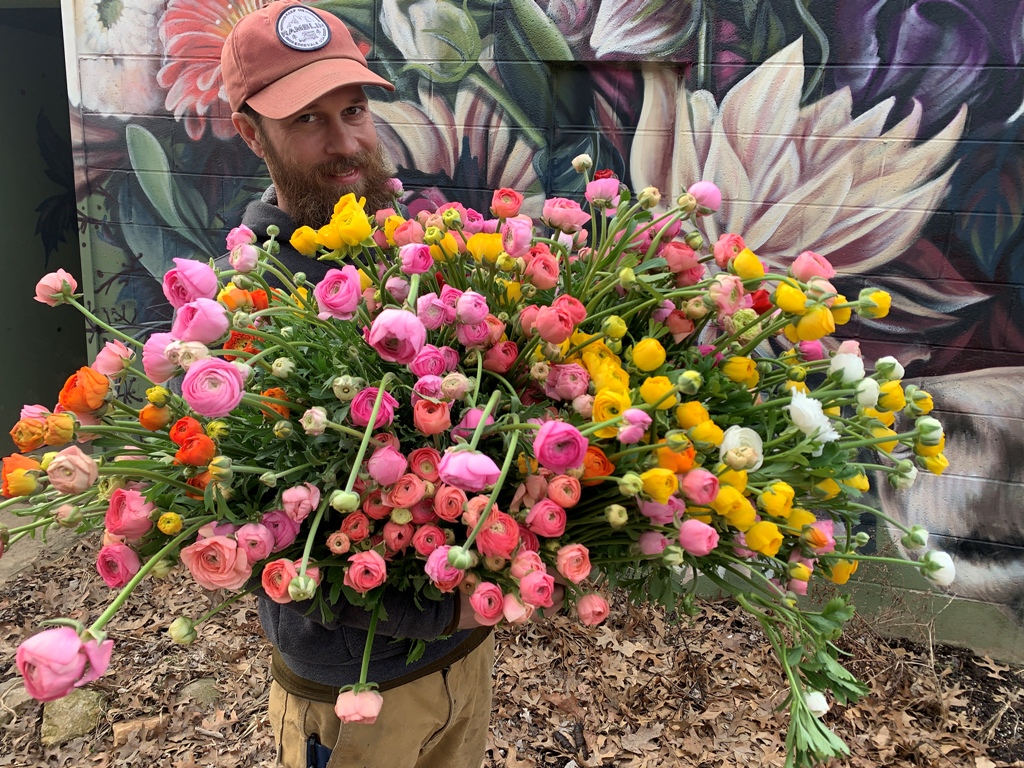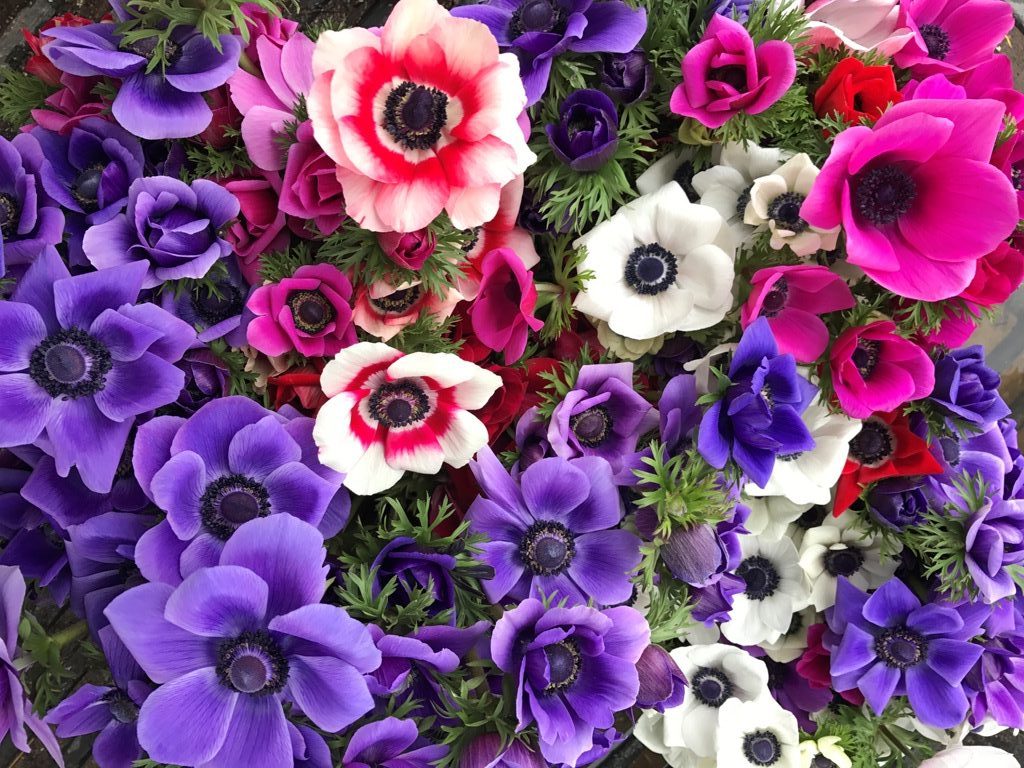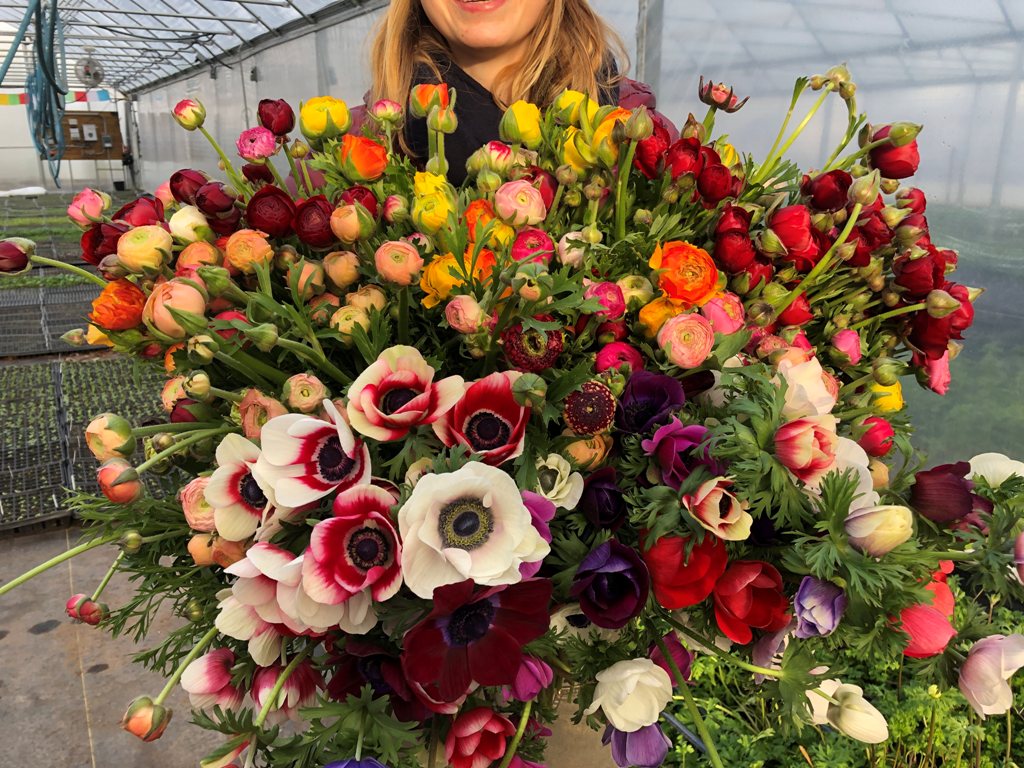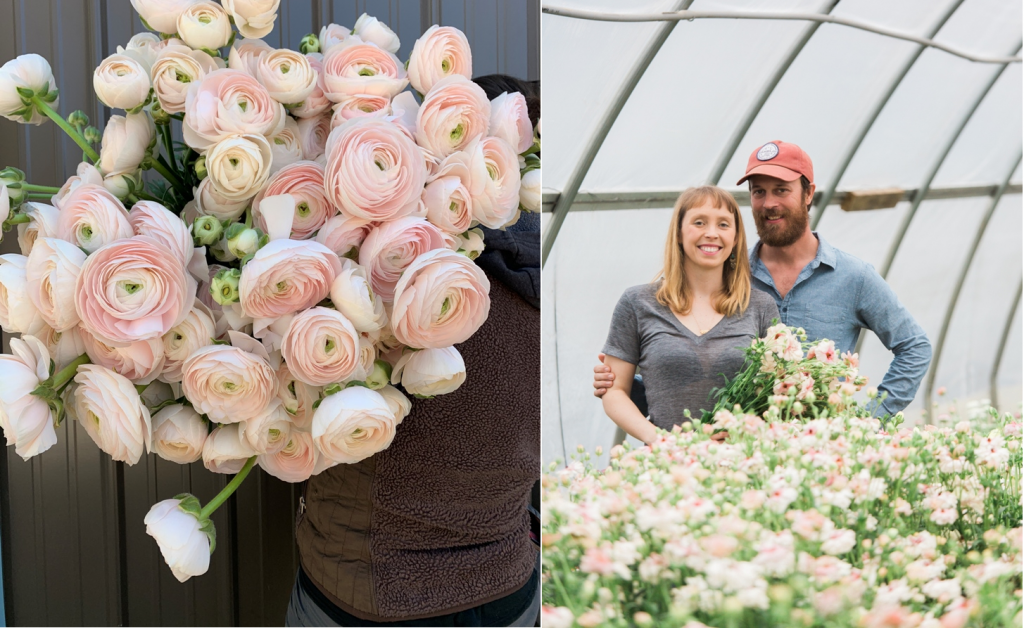
Ranunculus continues to grow in popularity as folks become more familiar with it through social media. In our zone 6a (and even a few zones colder than us), it can be grown in heated or unheated tunnels; it lasts two weeks in a vase, works well out of water for design work, and each bloom is so fluffy and full of petals that fairies could live in them.

Sometimes I feel bad for anemones because I think they get overshadowed by their seasonal partner (the ranunculus), while still lasting just as long in a vase, and having a look that no other flower does, so I love anemones! This year we are pushing how early and how late into the season we’ll have these blooms, planting each with multiple successions.
Both anemones and ranunculus share the same temperature and culture requirements, making these two crops ideal companions for growing in the same greenhouse or high tunnel.
It is best to pre-sprout both these crops before planting in the ground. We want to make sure every hole is filled with a viable plant because the greenhouse is expensive real estate — and these flowers are worth the investment.
The heated beds typically give us the best production with the strongest, longest stems, and the largest blooms — a nice way to start the season. Even with heating and steaming the beds, the price we get per bunch makes it one of our most profitable crops. Our heated production is typically destined for florists both locally and through our shipping program direct to designers, although during COVID times and the shutdown, we shipped most of our harvest to retail customers in 2020. The unheated production of ranunculus still results in great blooms and leads us into Mother’s Day sales. Mother’s Day typically marks the end of the ranunculus and anemones for our zone, but we still plant that latest succession in hopes that we’ll get blooms through the end of May before the heat kicks in.

Instagram is a great way to keep track of the trends and to watch other growers’ trials of new varieties. Whether or not you grow these crops will be determined mainly by your sales outlets. If you only sell via the farmers’ market and that doesn’t start until May, this potentially may not work with your timing to introduce ranunculus and anemones. If you are selling mainly to designers, you may need more specific colors to offer, but you’ll have to watch the trends. We try to always have white, blush, and salmon since those are the most highly sought after. Since we have multiple sales outlets, we grow a ton of different colors and varieties, but we are refining our selection each year based on sales records.
There are many suppliers you can order corms from, our favorites being: Onings, Ednie (Gloeckner), Tecolote (you can order through Ednie or Flamingo), Greenworks (you can order through Ednie or your Zabo Plant representative). We are also excited to announce that at Sunny Meadows, we have been working on saving corms and are now offering a mix of corms for sale on our website in our fall bulbs section!

For more details about planting methods, specific weeks, and lots more information about all the crops we grow in our hoops and greenhouses, be sure to check out our upcoming online course Flower Farming School Online: Growing Cut-Flower Crops in Hoop and Greenhouses. We are so excited to be able to offer a comprehensive look at our greenhouse production as there is not a lot of specific cut flower information out there to guide growers. We will be sharing more free resources to those on our wait list, you can sign up here .


Curious your experience with Alstromeria? I don’t see too many people growing those but I understand them to be very long lasting in the vase.